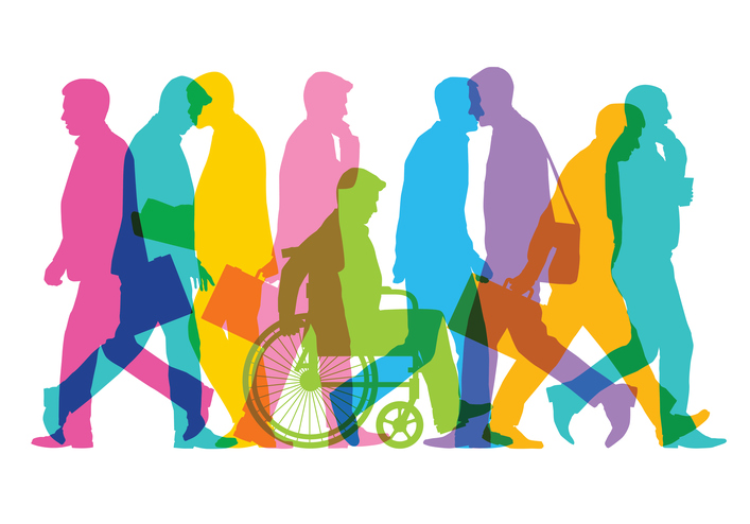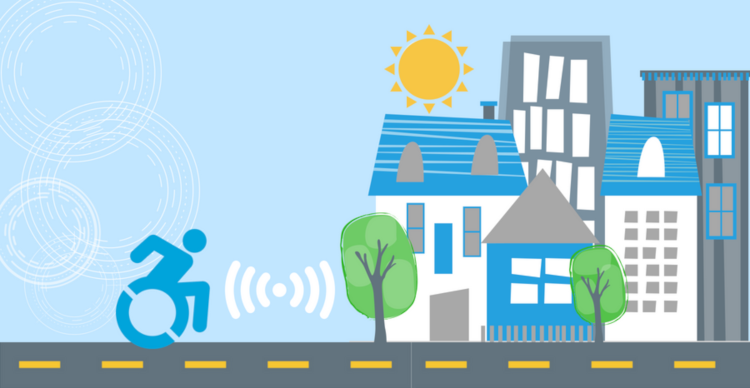Inclusive Smart Cities Needed for the Disabled
Much of the coverage about smart cities discusses how sensors, automation and energy-efficient buildings could forever change the lives of the residents who live in them. But, outside of the dazzling examples of high-tech components, one aspect of smart cities doesn’t receive as much attention — making them inclusive for people with disabilities.
Could It Be Harder to Find Help When Needed?
One of the things often said about smart cities is that they’ll operate largely without human intervention. For example, although people will set the algorithms and other technologies that help smart cities function, automation will make human staff members less necessary.
And, consider touch screen technologies where people can do things like purchase transit tickets without interacting with an employee. That’s a viable option for some people, but what about those with limited motor control, those who need more inclusive smart cities?

Moreover, most people with mobility impairments have probably been in a situation where they visit a venue that promises to have disabled access but doesn’t give clear indications about how to find the entrance that’s not up a flight of stairs or locate the lift. Once futuristic cities become so “smart” that humans aren’t necessary for supervising things, anyone who needs assistance — disabled or not — may have trouble finding it.
If you think about the phenomenon where people go out for dinner together and tap the screens of their smartphones while waiting for the food to arrive instead of talking to each other, it seems we’re rapidly moving toward a future where people engage with machines more than humans. That trend could mean if a disabled person needs immediate help to purchase something or ask a question from a human, it may not be available.
Disabled People Could Be Excellent Inclusivity Resources
Unfortunately, even when city planners and other officials have inclusivity for disabled people in mind, their intentions often fall short. For example, they might install a button for automatically opening a door, but put it at a height that’s too high for a person in a wheelchair to reach.
Also, some apps and websites that ask for feedback about smart city developments have the option to change the text size, which assists some people with low vision. But, content with a size-changing feature may not also work with screen readers, making them inaccessible to blind people or those who have learning disabilities that make reading challenging.
Many disabled people have to think ahead when handling the tasks of daily living — such as assessing the precise angle needed so that a door doesn’t collide with a mobility aid and knock the user off balance or contacting a business in advance to find out about disabled access. When hearing that, those without disabilities frequently exclaim that they’d never thought about how different life can be for someone with a disability.

As such, it’s crucial for those involved with smart city research to view disabled people as essential sources of information. If disabled people get overlooked in the planning process, the outcomes of smart cities could be exceptionally disappointing for them. Therefore, we need inclusive smart cities.
Inclusivity Starts With the Basics
Some conversations about smart cities encompass robots and Internet of Things (IoT) sensors. Those things are fascinating, but well-planned, inclusive smart cities need to think about the fundamental aspects, too, such as bathrooms.
A commercial bathroom must be designed in a way that supports high functionality and promotes unrestricted traffic flow. Then, to bring inclusivity into the picture means making the doorways wide enough so a person in a wheelchair can fit through them comfortably or ensuring that all signage includes braille to accommodate blind people.
Then, city planners can branch out from there and determine whether something that looks aesthetically pleasing might pose unnecessary barriers for disabled people. A revolving door looks cool, but it could cause disabled people to conclude it’s too complicated to even attempt to use. Or, if an intelligent interface gives audible feedback without a text equivalent, it won’t work for deaf people.
Keeping the footpaths clear is also crucial. Some projects are in the early stages of giving disabled people information about broken areas of concrete or areas blocked due to construction. A decorative item like a large planter could make the edges of a pedestrian area prettier, but is it also making accessibility unnecessarily challenging?

Before the professionals involved with smart cities finish their plans, they need to determine if there are hidden barriers that people outside of the disabled community may not notice. Otherwise, the expected fanfare associated with a smart city may get drowned out if it becomes apparent that the lead designer made a glaring oversight that makes the destination non-inclusive in some way or another.
Well-Planned Smart Cities Could Assist Disabled People
If the people in charge of making smart cities possible listen to the needs of disabled people and take them into account, it’s likely that smart cities could help disabled individuals instead of making things difficult for them. For example, think about if a person could use voice-recognition technology to accomplish things like opening a door or finding out the location of the nearest disabled toilet?
Or, going back to the scenario of how footpath obstructions can cause hassles, perhaps a system could be implemented for disabled people or anyone who wants to use it that gives warnings about upcoming hazards. Mitsubishi Electric and Here Technologies recently piloted a similar technology for vehicle-to-vehicle alerts about hazards ahead in a designated lane.
Inclusive Smart Cities Benefit Everyone
This overview shows that although smart cities have inclusivity challenges, they also give designers opportunities to make strides in improving access for the benefit of everyone who lives in or visits a smart city. After all, even those of us not born with disabilities could break a limb and deal with a temporary disability. Plus, getting older tends to make some tasks more difficult and bring some age-related, disabling side effects like arthritis, hearing loss or reduced vision.
[perfectpullquote align=”full” bordertop=”false” cite=”” link=”” color=”#4AC1A8″ class=”” size=””]Suggested Reading: 4 Smart Home Trends on Your Doorstep[/perfectpullquote]
That means it’s worthwhile for smart city planners to work hard toward a future of better inclusivity. Getting advice from people who live with disabilities is a sensible place to start. We need inclusive smart cities.
